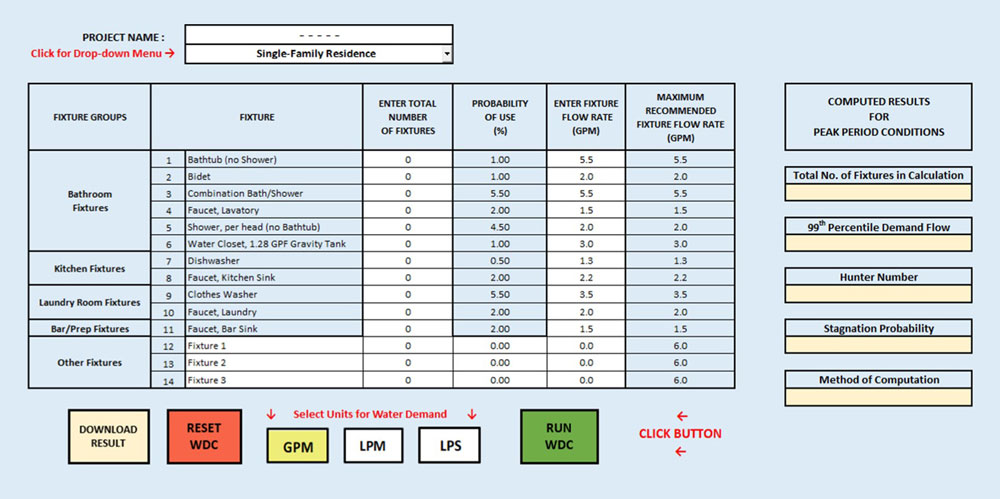
The Golden State is officially in on IAPMO’s Water Demand Calculator®.
On July 1, California made Uniform Plumbing Code (UPC®) Appendix M — the Water Demand Calculator available for statewide use on a voluntary basis.
In accordance with the move, IAPMO Vice President of Technical Services and Research Christoph Lohr, P.E., hosted a webinar with Gary Klein, president of Gary Klein and Associates, that covered the benefits of using the Water Demand Calculator to size plumbing in homes and apartment buildings.
Lohr provided guidance on using the revolutionary tool, which accurately predicts peak water demand in single-family homes and apartment buildings, reducing the carbon footprint of the structure and saving consumers on both their water and water heating-related energy utility bills for the entire life of the plumbing system. Proper sizing also greatly minimizes the potential threat of bacterial growth within the system, which can lead to such serious health risks as Legionnaires’ disease.
“The webinar was well attended, with numerous California municipalities and stakeholders represented, all interested in learning how to formally adopt the Water Demand Calculator into their permit plan processes,” Lohr said. “The future of right-sizing officially starts now in California.”
In 2021, the Statewide Utility Codes and Standards Team submitted a Title 24 Petition to adopt Appendix M into the California Plumbing Code during the 2022 Intervening Code Adoption Cycle. The California Water Efficiency Partnership (CalWEP) — a state chapter of the Alliance for Water Efficiency (AWE) of which IAPMO is a member — and 15 member agencies supported the petition.

The Water Demand Calculator reduces water aging, delivers hot water faster, generates significant construction cost savings, reduces the carbon footprint of the structure, and subsequently saves on water- and water heating-related utility bills for the entire life of the plumbing system. Instead of using flow rates and flush volumes from the 1940s, the Water Demand Calculator allows the user to “right-size” the cold and hot water distribution systems in homes and apartment buildings using modern information about flow rates and simultaneous use.
“This marks an important moment in the history of the Water Demand Calculator as California, the fifth-largest economy in the world, officially implements the use of this 21st-century solution,” Lohr said. “The momentum in adoption of the Water Demand Calculator has been remarkable, with one- fifth of states and a host of other city and regional jurisdictions choosing to adopt this tool in a few short years. We are very grateful to all the volunteers and stakeholders who worked so hard to help make this possible. IAPMO stands ready to help the California plumbing industry successfully understand how to utilize the Water Demand Calculator for its projects.”
The Water Demand Calculator represents the most impactful innovation in pipe sizing in nearly a century. It is the result of a multiyear effort to develop a new statistically based pipe-sizing method stemming from a need to address profound water safety and wasted water and energy concerns resulting from oversized water supply pipes in homes and buildings.
California became the 10th state to adopt Appendix M into its codes and standards, joining Hawaii, Montana, Nevada, New Jersey, New Mexico, North Dakota, Oregon, Washington and Wisconsin, as well as such major cities as Houston, San Jose, Seattle and Vancouver, British Columbia.
The Water Demand Calculator version 2.2 and user guide, as well as related videos, are available at https://www.iapmo.org/we-stand/ water-demand-calculator/water-demand-calculator-california. For specific information about the Water Demand Calculator or to provide feedback, please contact Lohr at christoph.lohr@iapmo.org.

Mike Flenniken is a staff writer, Marketing and Communications, for IAPMO. Prior to joining IAPMO in 2010, Flenniken worked in public relations for a group of Southern California hospitals and as a journalist in writing and editing capacities for various Southern California daily newspapers.
Last modified: September 1, 2024
